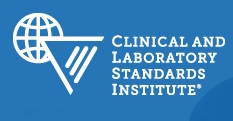Members Login

Channels
Special Offers & Promotions
CLSI Begins Development of a Document on Next Generation IVD Instrument Interface
The Clinical and Laboratory Standards Institute (CLSI) has commenced development of a standard on Next Generation In Vitro Diagnostic (IVD) Instrument Interface (AUTO16).
 The document development committee consists of individuals from the IVD industry, laboratory information system (LIS) vendors, and clinical laboratorians.
The document development committee consists of individuals from the IVD industry, laboratory information system (LIS) vendors, and clinical laboratorians.
The new AUTO16 standard, based on Health Level Seven (HL7), will improve IVD instrument connectivity by defining an interface that is more consistent across instruments and leverages modern health care connectivity protocols and network technologies. The standard will provide plug and play connectivity between instruments, middleware, and LIS systems, and additional capabilities not supported by the current CLSI standard LIS02 (Specification for Transferring Information Between Clinical Instruments and Computer Systems [formerly ASTM E1394-97]).
The CLSI standards LIS01 (Specification for Low-Level Protocol to Transfer Messages Between Clinical Laboratory Instruments and Computer Systems) and LIS02, which were developed over 20 years ago, describe specifications based on RS-232 (serial) communication for interfacing with an IVD instrument. Although later updated to support Transmission Control Protocol (TCP)/Internet Protocol (IP) communication, the protocols described by the standards essentially remained the same. In addition, the variability allowed by the LIS02 standard has resulted in unique instrument vendor implementations, requiring LIS/middleware vendors to develop interfaces tailored to each specific instrument.
This new standard will leverage the work of the IVD Industry Connectivity Consortium (IICC) and Integrating the Healthcare Enterprise (IHE) organizations to publish a successor to the LIS01 and LIS02 standards. This standard will be created around the Laboratory Analytical Workflow (LAW) profile developed by the IHE Laboratory Technical Committee and IICC technical team members. The LAW profile, last published in March 2015, provides use cases, transactions, data flows, HL7 messaging conventions, and HL7 message definitions. This new standard will improve IVD instrument connectivity by defining an interface that is more consistent across instruments and leverages modern health care connectivity protocols and network technologies.
The LAW profile does not provide any background discussions on how the new interface relates to the existing LIS01/LIS02 interfaces, or any discussions on security. This information will be important to implementers of the interface, as well as to health care providers so they understand the impact and benefits of the new interface on their laboratory environment.
This new CLSI standard will provide the following benefits:
- Background information will be provided on the benefits of the new HL7-based interface over the existing LIS01/LIS02 interfaces that will not be available from the LAW profile.
- The CLSI standard will be easier to use than the IHE Technical Framework documents.
- The standard will address security by relying on CLSI document AUTO11 (IT Security of In Vitro Diagnostic Instruments and Software Systems) to define security requirements.
The development of this CLSI standard will require close coordination with IICC and IHE. Document Development Committee Chairholder Ed Heierman and Vice-Chairholder Andrzej Knafel are members of IICC and IHE, and they have contributed significantly to the LAW profile work.
Media Partners


